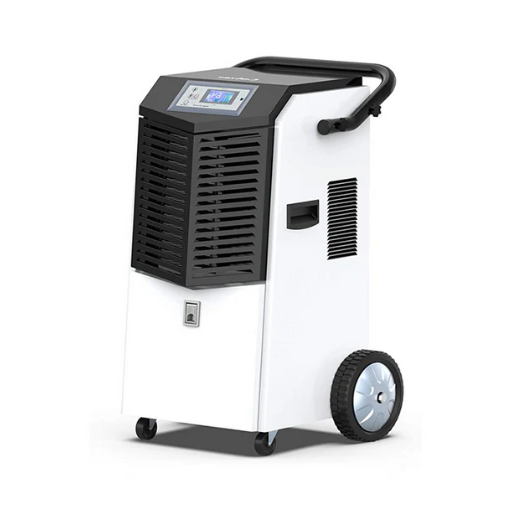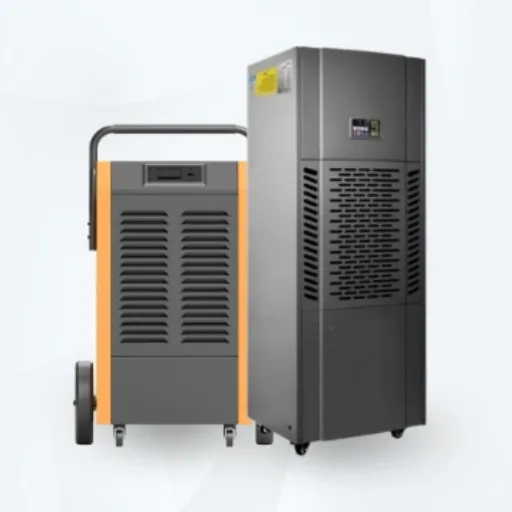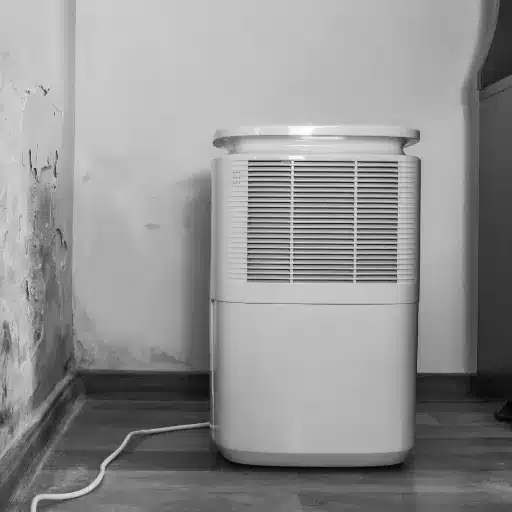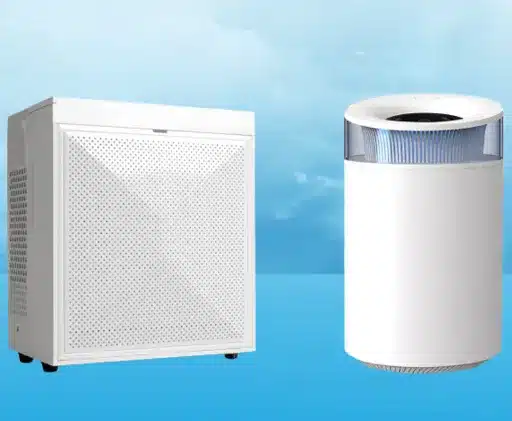Maintaining optimal humidity levels is essential for both residential and industrial environments, as excessive moisture can lead to structural damage, mold growth, and compromised air quality. However, not all dehumidifiers are built the same—industrial and home solutions differ significantly in terms of capacity, functionality, and design purpose. Understanding these differences is crucial to making an informed decision that effectively meets your specific needs. This article will provide a detailed comparison of industrial and home dehumidifiers, exploring their key features, applications, and the factors to consider when selecting the right solution for your space. Whether you’re managing a large warehouse or looking to create a healthier living environment at home, this guide will help you identify the most suitable dehumidification system.
What is a Dehumidifier and How Does It Work?
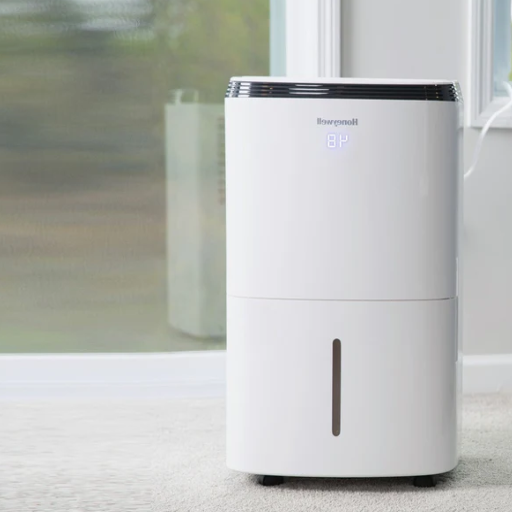
Understanding Moisture and Humidity Control
The humidity, or moisture in the air, plays a significant role as far as comfort and functionality of both residential and industrial spaces are concerned. Normally, humidity levels are expressed as relative humidity (RH), which is the amount of moisture in the air compared to the maximum it can hold at a given temperature. High levels of humidity promote the growth of mold, mildew, and bacteria, as well as extremely low levels leading to dryness and discomfort. Efficient control of humidity is critical to protect stored goods, maintain structural integrity, and create a safe and comfortable place.
Dehumidifiers are devices created to regulate or decrease high levels of humidity by getting rid of extra moisture in the air. Basically these systems operate by sucking air into them cooling it so that it condenses thus changing its form from gaseous state into liquid one; then reheating this same air before letting out again to the outside environment. Some models use refrigerant-based cooling for condensation, while others use desiccants for absorption of humidity. The choice of dehumidification method depends on specific requirements for controlling relative humidity and where it will be used.
Humidity control is important not only for comfort reasons. In industrial settings, high humidity can result in damage to critical equipment, warping of materials, and speeding up corrosion. At the same time, excessive moisture in residential areas can worsen the quality of air by causing respiratory problems and spoiling furniture. If we understand how moisture content interacts with environmental factors, users can determine precise dehumidification needs that protect property, improve health, and optimize operational efficiency.
The Role of a Dehumidifier in Residential and Commercial Applications
Dehumidifiers quietly siphon dampness out of the air, which keeps indoor humidity from creeping past comfortable thresholds. In a typical home, that moisture removal helps fend off mold colonies, curbs dust mite populations, and spares wooden furniture from warping; these benefits together breathe cleaner air and support occupant well-being. Targeting the sweet spot of 30 to 50 percent relative humidity, the units matter most during sultry summer months or in coastal enclaves where humidity is a year-round concern.
Commercial spaces look to dehumidifiers for entirely different reasons, chiefly the preservation of machinery, stock, and structural elements that moisture can compromise. Steel frames and circuit boards are spared rust and corrosion, while paper goods and electronic inventory dodge the telltale tide marks that signal water incursion. A pharmaceutical plant serves as a case in point: humidity control safeguards blister packs and bulk powders alike, preventing chemicals from clumping, caking, or otherwise behaving unpredictably as they wait to be boxed for shipment.
Modern high-capacity dehumidifiers often arrive with precision controls and eco-conscious compressors, features that suit both office blocks and private homes. Seasoned users appreciate the versatility, for the machines can be dialed in to match troublesome moisture or preserve a prized collection. Provided the unit is correctly sized and tended to, the threat posed by excessive indoor humidity-such as mold, mildew, and warped wood but disappears.
How a Dehumidifier Drain System Operates
A dehumidifier drain system continuously siphons moisture from the indoor air and sends the surplus water away through an established drainage pathway. Air enters the appliance, is briefly chilled to form condensate, and the liquid either collects inside a holding tank or flows out through a permanently plumbed line. Such automatic routing keeps water from pooling inside the machine itself, preserving both efficiency and reliable performance over time.
Dehumidifiers typically feature one of two drainage arrangements: manual and continuous. The manual configuration relies on a removable bucket that a user must empty once it reaches capacity; many modern models flash a warning light to signal that collection has stopped. Continuous drainage, by contrast, employs a garden-hose connection that lets water travel unattended to a floor drain, sink, or sump pit, thus supporting weeks or months of operation without intervention in chronically damp basements.
A dehumidifier can work as intended only if its drainage circuit is well looked after. Inspect the hose joint to confirm it is tight, clear any debris from the discharge run, and keep the machine elevated enough that water flows downhill toward the drain. Periodic scrubbing of the tank, tray, and any fittings prevents scale and mildew, which in turn safeguards air quality and keeps the appliance running smoothly.
What is the Difference Between an Industrial Dehumidifier and a Home Dehumidifier?
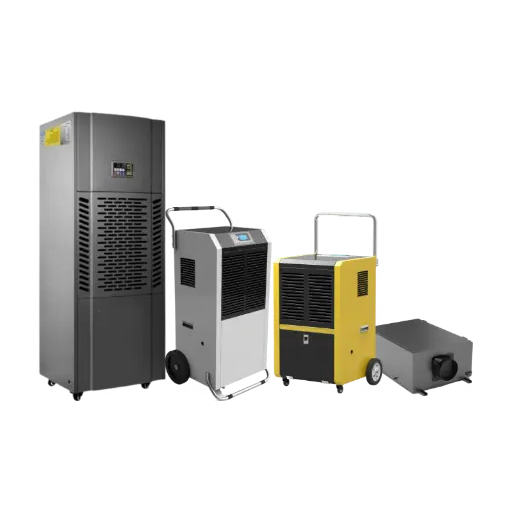
Comparing Capacity and Moisture Removal Rate
Dehumidifiers with larger capacities work faster in removing moisture, and this varies depending on the conditions, such as AHAM (Standardized) and saturation (Extreme).
|
Aspect |
Description |
Key Points |
|---|---|---|
|
Capacity |
Moisture removal rate |
Measured in pints/day |
|
Standard |
Normal conditions |
80°F, 60% RH |
|
Extreme |
Max conditions |
Near 100% RH |
|
Efficiency |
Energy consumption |
Liters/kWh |
|
Coverage |
Area suitability |
Small to whole-house |
|
Speed |
Drying performance |
Faster for larger units |
|
Airflow |
Fan power |
Higher = better |
Understanding Energy Efficiency and Electricity Usage
In determining the suitability of dehumidifiers for use either at home or in industry, one should take into account factors such as energy efficiency and power consumption. Industrial dehumidifiers tend to consume more electricity because they are typically larger and constantly running in harsh environments. Efficiency levels of these machines can be determined by the number of litres of moisture they can remove per kilowatt hour (kWh), which allows comparison across different types and models. Energy recovery systems, variable speed compressors, and advanced programmable controls, among other features, may be used to enhance the efficiency of high-capacity industrial units.
However, home dehumidification systems aim at striking a balance between energy consumption and practicality during daily operations through emphasis on certification under Energy Star. This is a certification that proves compliance with various regulatory bodies’ energy efficiency standards. Lower wattage operation settings characterize most systems in homes with auto-shutdowns to minimize any unnecessary power wastage when the desired atmospheric moisture is achieved.
For example, a typical 50-pint domestic dehumidifier could use approximately 540 watts per hour at the most ideal conditions, translating to about 30-35 kWh per month for moderate use. On the other hand, a large industrial dehumidifier can consume between 1,000 and 2,000 watts per hour, depending on its ability to serve large spaces. The cost of electricity is significantly dependent on proper sizing and usage according to environmental demands; hence, it is important to know this information before purchasing a dehumidifier.
When Should You Use a Commercial Dehumidifier?
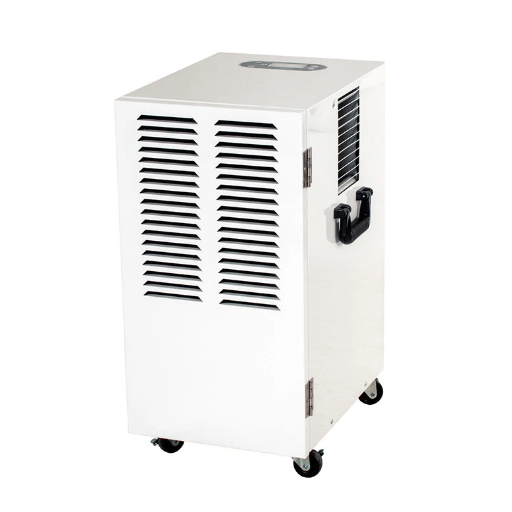
Identifying the Right Dehumidifier for Commercial Applications
A comprehensive understanding of the environmental factors and operational requirements specific to the intended space is required when selecting an appropriate commercial dehumidifier. Among them are area size, humidity level, and dehumidifying units’ capacity, which is usually measured in pints per day (PPD). For instance, spaces with high moisture load, such as warehouses or manufacturing plants, often need solid units that can extract between 75 to over 200 PPD.
Energy efficiency is a critical factor, especially for businesses aiming to reduce their running costs. High-efficiency models may have Energy Star certifications indicating optimum performance, but they have low energy consumption. Also, automatic humidistats, programmable settings, and continuous drain options are some of the features that could enhance operational functionality and adaptability.
Specialized industries, e.g., pharmaceuticals or data centers, may require precision dehumidifiers with added air filtration capability to ensure environmental control without harming sensitive materials or equipment. Since each application calls for a discreet approach towards the dehumidifier selection process, it becomes vital to align the equipment’s specifications with unique humidity control requirements for a particular room. A correct choice will enhance the life span of the equipment, reduce maintenance, and protect the commercial area.
Exploring Continuous Operation and Moisture Removal Capacity
Continuous operation of a dehumidifier is an important consideration, especially in industrial or high-humidity environments, because it allows for uninterrupted moisture extraction over long periods. One of the factors that can be used to evaluate its effectiveness includes moisture removal capacity, which is measured in pints or liters of water removed per 24-hour period under standardized conditions. Take, for instance, high-capacity dehumidifiers, which can have daily extraction rates exceeding 70 pints, making them appropriate for large spaces or environments with elevated moisture loads.
Nevertheless, continuous dehumidifiers’ operating efficiency depends on several factors. The Integrated Energy Factor (IEF) is one energy efficiency rating that shows how well the equipment performs relative to the amount of electricity consumed. Additionally, advanced features such as automatic defrost systems are embedded within them to prevent frost accumulation on the coils that could interfere with their normal functioning at low temperatures. High-capacity dehumidifiers also often come with either built-in condensate pumps or gravity drainage systems to allow for an extended period of functionality without requiring manual emptying of water tanks, thus making them ideal and seamless in commercial and industrial settings where constant operation is required.
Another important factor is the match between the capacity of a dehumidifier and the environmental conditions, including ambient temperature and initial relative humidity. Dehumidifiers meant for continuous operation are equipped with parts that can resist wear and tear, which makes them last long without changes in performance. By considering these factors, industry professionals can ensure that equipment meets both moisture control requirements and energy efficiency standards for optimal long-term operation.
Why Commercial Dehumidifiers Often Include Pumps
Manufacturers of commercial dehumidifiers often fit them with pumps to enable efficient water elimination in places where emptying manually would be difficult. These built-in pump systems help in ensuring smooth operations of the dehumidifier by draining out the condensed water automatically to a preferred outlet. It is important to note that this feature has special significance for wide-scale applications such as industrial plants, warehouses, and construction sites due to the quick filling up of water collection tanks as they deal with large amounts of moisture withdrawn from the atmosphere.
Commercial dehumidifiers with pumps are designed to transport water over long horizontal distances or vertically against the force of gravity, giving users the freedom to locate them conveniently. Pumps are essential in directing extracted water away efficiently, where there might be no immediate access to a low-level drainage point in multi-story buildings or other difficult geographical locations. They do this by pushing water through hoses that may span several feet and thus enabling smooth and uninterrupted dehumidification processes since many models are built for elevated discharge heights.
Furthermore, the use of pumps leads to decreased downtime experienced during manual tank emptying, which increases overall operational efficiency. This is particularly applicable for commercial purposes, which demand an uninterrupted precision moisture control over extended periods. Manufacturers integrate these pumps into their systems so that they can satisfy both convenience and performance aspects; they align their designs with reliability and scalability requisites set by the industry. As such, these inventions have contributed towards reduced labor and maintenance costs, hence offering a practical solution for managing moisture at various demanding sites affordably.
What Features to Look for in a Dehumidifier?
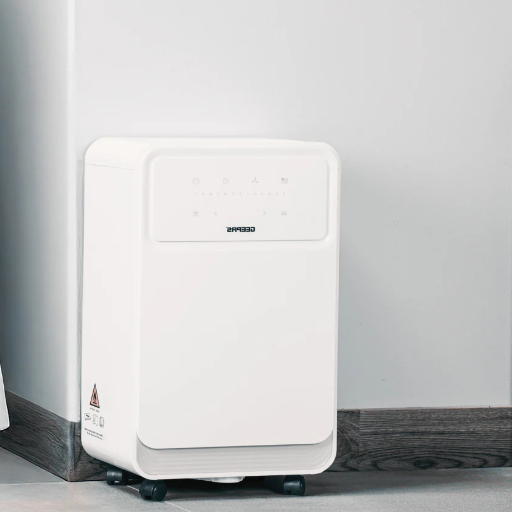
Importance of Filters and Warranty
Filters and warranties are critical components to evaluate when selecting a dehumidifier, as they directly impact performance, maintenance, and long-term reliability. Filters ensure optimal air quality by capturing dust, allergens, and other airborne particles, while warranties provide the user with financial protection against defects and unexpected failures. Below are five detailed considerations regarding filters and warranties:
- Efficiency of Filters: A genuine HEPA filter traps 99.97 percent of particles starting at 0.3 microns, a feat that matters in homes where asthma or sensitive skin sets the comfort bar.
- Filter Maintenance Requirements: Washable media cut replacement costs, but remembering to rinse and reinstall can be a chore that people forget. Disposable cartridges are simpler to handle, yet nibble at the budget every few months.
- Type of Warranty Coverage: Warranties vary significantly in terms of what they cover, ranging from limited warranties focused only on specific components to comprehensive warranties that include all parts and labor. It’s advisable to choose a dehumidifier with a warranty that protects against common issues such as compressor or motor failure.
- Warranty Duration: Plans span anywhere from a single year to five years of uninterrupted protection, and premium manufacturers usually settle on the upper end. A lengthy commitment often signals that the maker trusts its workmanship it hedges the buyer’s risk nearly as well.
- Customer Support and Claims Process: How quickly help arrives-and how simple the paperwork feels-can matter as much as the coverage itself. Streamlined online portals and direct telephone lines shrink the usual delays so questions and repairs do not drag on.
Picking the right filters and studying the warranty language lets owners stretch utility and lifespan far beyond the initial purchase date.
Choosing Between Portable and Stationary Models
Choosing the right dehumidifier begins with grasping the basic trade-offs between portable and stationary models. A portable unit is built for on-the-fly adjustments; most weigh no more than a suitcase, roll on smooth casters, and slip easily from a damp bathroom to a musty study. Users can tailor humidity targets with a twist of a dial and receive a beep when the tank nears its limit, features that suit renters or anyone coping with quick mood swings in indoor moisture.
By contrast, a stationary dehumidifier plants itself in one location-usually ducted into the HVAC grid-and never complains about being worked overtime. Its bulk lets it draw and condition far larger volumes of air, perfect for city basements or a warehouse humming with humidity. Professional installers anchor the plumbing and wiring, an expense that stings at first but vanishes from the ledger once years of maintenance-free service stack up.
An informed purchasing choice rests on three fundamental criteria: the unit’s maximum dehumidifying capacity measured in pints per day, its energy footprint-most notably represented by the Energy-Star label, and the feasibility of its drainage setup, whether manual, continuous, or pump-assisted. Portable machines suit renters and transient scenarios where humidity swings demand rapid correction, while stationary installations deliver persistent, large-space relief in basements, libraries, or climate-sensitive collections.
Considering Pints Per Day and Water Removal Capacity
The number of pints per day is a basic specification for dehumidifiers that indicates their ability to remove moisture from the air daily under standard operating conditions. For smaller rooms like bathrooms or closets, units with a capacity of 20–30 pints per day are usually enough, while larger areas such as basements or warehouses that are always damp need high-capacity units that can remove 50–70 pints or more per day to maintain optimum humidity levels. Properly sized dehumidifiers ensure efficiency and prevent machine overloading that may wear it down prematurely or consume extra energy unnecessarily.
When selecting a dehumidifier, water removal capacity should also consider the moisture content of the surrounding area and how well it is ventilated. For instance, if you reside in a place with high levels of humidity, like coastal areas or subtropical climates, then you will probably require one that operates at high frequency, which means a larger capacity model. However, in mild or seasonally dry regions, smaller capacity units are often more suitable. Also important is how the device handles extracted moisture. For sporadic use, manual drainage through a removable water bucket may suffice; however, for industrial applications, models that have continuous drainage features or built-in pumps to transfer condensate automatically to an external drain or sump are preferable.
Furthermore, modern dehumidifiers now come with advanced technology that allows for better performance tracking as well as automation so as to maximize their water-removing potential. Several contemporary appliances are integrated with smart sensors that can monitor room conditions at any particular time while varying compressor operation depending on humidity levels that are detected within. Additionally, there is today a greater availability of energy-conserving models offering extraction efficiencies comparable to traditional models but without substantial increases in power consumption, thus balancing environmental friendliness and functionality. Meticulous attention given to size, capacity, and drainage systems ensures that an appropriate dehumidifier is chosen for its intended purpose, thereby minimizing operational interruptions.
How to Maintain Your Dehumidifier for Optimal Performance?
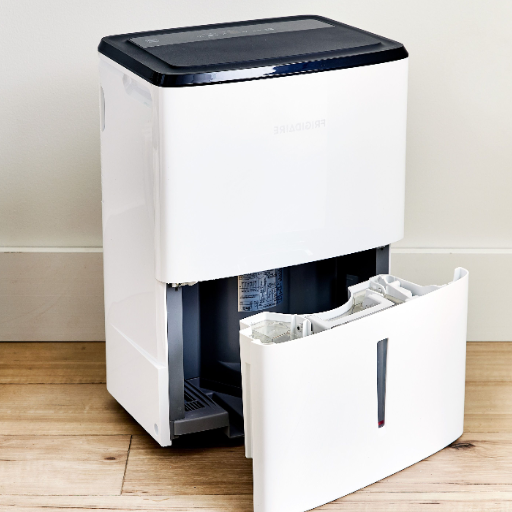
Regular Filter Maintenance and Replacement
If you want your dehumidifier to work right, give its filter some love. A clean filter grabs lint, pet hair, pollen-things you don’t want blowing back into the room. Dirt piles up quickly, though, so the screen can choke off air, and that cuts the power of the machine. Most makers say to check the filter every two or three weeks; heavy users lean toward every week. Washable screens need a rinse in lukewarm water and a full-air dry before sliding them back in, otherwise, tiny mold spores can start a party inside the unit.
Filters don’t last forever, so swaps are part of the deal. Every three to six months is the ballpark, but damp basements or dusty workshops might shorten that window. Stick with the brand the manufacturer sells; off-market options can squeeze air flow or even burn out the motor. Keep a calendar reminder, grab the right size, and your dehumidifier will thank you by keeping the air fresher for longer.
Skipping regular filter checks is like tossing a wrench into your dehumidifier’s gears. Dirt-packed mesh forces the motor to strain, which robs it of power and chips years off its life. Rising electric bills are just the start; the sudden breakdown could slap you with an expensive repair ticket. Swap the filter on schedule and take a minute to eyeball its grit, and the machine will run smoother, breathe easier, and cost you less each month.
Ensuring Proper Drain and Hose Functionality
Maintaining the drain and hose system of a dehumidifier is vital for its optimum functioning as well as avoiding potential operational challenges. The main purpose of the drain system is to aid the unit in getting rid of moisture collected so that there is no buildup inside it. In the case of portable models that depend on manual draining, it’s paramount to keep an eye on the water reservoir and empty it when the indicator shows full capacity. Conversely, dehumidifiers having a continuous drain feature should have their hoses inspected at intervals to ensure secure attachment, absence of obstacles, and correct direction to a place where water can be drained.
It should be noted that if there are any obstructions in the tube, this will cause backflow flow leading to internal damage within or even unintended pooling elsewhere. Within time, sediments may accumulate in such hoses, hence restricting water flow if these are not cleaned regularly. It is therefore recommended to clean it using a mild solution while checking for any cracks or physical wear that could compromise its integrity.
Moreover, ensuring a level drainage configuration with no kinks maximizes efficiency and reduces stress on the built-in pump, especially with models that are designed with pumps that direct water vertically over expansive heights.
By doing this regular maintenance, you can avoid leaking, prolong the lifespan of your equipment, and improve the efficiency of energy. In addition to these practices, following the manufacturer’s instructions will help avoid failure and increase longevity.
Tips for Extending the Life of Your Dehumidifier
- Regular filter replacement
Many dehumidifiers have air filters that catch dust, allergens, and other kinds of particles. They can get dirty over time, blocking air flow and requiring the machine to work harder. Manufacturers will usually advise you to clean or replace the filters every one to three months or more often if you are living in a dusty environment.
- Monitoring and maintaining optimal humidity levels
A hygrometer should be used to measure relative humidity within the space where your dehumidifier is located. Ideally, humidity should range from 30% – 50%. Running the appliance outside this range may result in unnecessary damage to internal components.
- Inspecting and cleaning coils
The evaporator and condenser coils are crucial parts of the system for extracting moisture from the air. Over time, dirt or frost can accumulate on these coils, thus leading to inefficiency or even complete failure of the entire system. At least once a season, unplug it and check its coils; gently clean them using coil cleaner or a soft cloth if necessary. This helps ensure proper heat exchange happens, hence maximizing the efficiency of the device.
- Always be mindful of the right place
Sufficient clearance should be provided on all sides of a flat and stable dehumidifier surface to allow for good air circulation, usually 6 – 12 inches. Do not place it near walls, furniture, or other obstructions that could block airflow and cause overheating.
- Frequently, Clean out the Water Tank
The water collection tank must be emptied and cleaned regularly in order to avoid mold formation and bacterial growth in units without direct drainage. In addition, wiping down with a mild disinfectant solution in the tank maintains cleanliness and prevents odors.
- Use Only Under Certain Conditions
Except where designed for low-temperature operation, do not use the dehumidifier in very cold conditions. Over time, it may impair functionality through too much frost on the coils, leading to damage.
Thus, if one strictly follows these detailed guidelines, they can increase their dehumidifier’s lifespan while still maintaining its efficiency under different environmental conditions.
References
- Further Investigation Of Energy And Performance Impacts Of Whole-House Dehumidifier Duct Configurations – University of Central Florida.
- Evaluation of the Performance of Houses with and without Supplemental Dehumidification in a Hot-Humid Climate – Office of Scientific and Technical Information (OSTI).
- Development of an Integrated Residential Heating, Ventilation, Cooling, and Dehumidification System for Residences – Office of Scientific and Technical Information (OSTI).
Frequently Asked Questions (FAQ)
Q: What factors should I consider when choosing a dehumidifier for my crawl space?
A: When selecting a dehumidifier for your crawl space, consider the size of the area, the level of humidity, and any specific features you need, like a drain hose or a pump. It is also important to choose a unit that is suitable for residential use and can handle the moisture issues typical in basements or crawl spaces.
Q: How do industrial and home dehumidifiers differ in terms of capacity and usage?
A: Industrial dehumidifiers are designed for larger spaces and are built to withstand heavy-duty use. They have a higher capacity and are suitable for commercial or restoration projects. Home dehumidifiers, on the other hand, are generally smaller and suitable for residential settings, focusing on energy efficiency and quiet operation.
Q: Is a dehumidifier with a pump necessary for my basement?
A: A dehumidifier with a pump can be very useful in a basement or crawl space as it allows for continuous drainage without the need to manually empty the tank. This is particularly beneficial in areas where a drain is not available or the unit is placed far from a drainage point.
Q: What is the advantage of a commercial dehumidifier with a pump for restoration projects?
A: Commercial dehumidifiers with a pump are ideal for restoration projects as they are designed to handle larger volumes of water removal. They typically feature rugged construction and higher capacity, making them efficient dehumidifiers available for demanding environments.
Q: Can a 70 pint dehumidifier effectively manage moisture in larger areas?
A: A 70 pint dehumidifier is generally suitable for medium to large residential areas, providing efficient moisture control. However, for larger spaces or those with severe moisture issues, a higher capacity or industrial model may be more appropriate.
Q: What role does an LGR dehumidifier play in moisture control?
A: LGR (Low Grain Refrigerant) dehumidifiers offer advanced moisture removal capabilities, making them ideal for restoration and commercial applications. They use a heat exchanger to reduce humidity levels more effectively, even in challenging conditions, providing superior performance compared to standard models.
Q: Are there stylish dehumidifiers available for residential use?
A: Yes, many manufacturers offer stylish dehumidifiers that blend seamlessly into residential settings. These models are designed to be both aesthetically pleasing and functional, providing effective moisture control without compromising on interior design.

